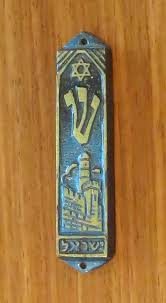10
Middle Ages
by yudaica2013 ·
 Three hundred years later, the Muslims conquered the territory, crossing the border with the United franc. In the year 732, Charles Martel’s defeat in the Battle of Tours, halting its expansion to the north, but still settled in the Pyrenees. Charlemagne then creates the Hispanic and incorporates in the year 817, Andorra in the Carolingian Empire. In the Middle Ages the valleys of Andorra were in the County of Urgell, to be ceded by Charles the Bald to Sunifred in the year 843. With the expansion of this county to the south, where land was more fertile, mountainous areas ceased to be relevant to the count and, in the year 1133, Ermengol VI surrenders all assets and rights acquired in the valleys of Andorra to the Bishop of Urgel. In 1095, the bishop in return for military protection, gave their political, judicial and military Caboet family, but retained sovereignty over Andorra, transforming the territorial domain in episcopal lordship.In 1185, Arnau Arnau Caboet married I Castellb . The marriage of Roger Bernard II of Foix and Ermessenda of Castellb , in 1208, he assumed the domain of Andorra for the County of Foix, who will increase their power in Bearn, Kingdom of Navarre and, centuries later, the Kingdom of France. As a result of conflicts between Roger Bernardo III de Foix and Pere d’Urtx, the September 8, 1278 signed the first Pareatge in Lleida, which sets limits on the power of each master, represents the foundation of the Principality of Andorra and defines Andorran obligations concerning tithes and military affairs. Ten years later, following the construction of a fortified church in San Vicente de Enclar by the Count of Foix, where he could monitor the activities of the Bishop of Urgel, the second Pareatge was signed in 1288. This second agreement provides, inter alia, the right to appoint a notary by both parties bearing their representation in the Principality.In 1419 it created the Consell de la Terra, consisting of two or three representatives of the six parishes, with the objective to defend local interests. In 1610 the son of Henry IV of France, Louis XIII, incorporating the county of Foix to the French crown, and since then, the heads of state will be the Bishop of La Seu d’Urgell and the King of France (currently the President of the French Republic).
Three hundred years later, the Muslims conquered the territory, crossing the border with the United franc. In the year 732, Charles Martel’s defeat in the Battle of Tours, halting its expansion to the north, but still settled in the Pyrenees. Charlemagne then creates the Hispanic and incorporates in the year 817, Andorra in the Carolingian Empire. In the Middle Ages the valleys of Andorra were in the County of Urgell, to be ceded by Charles the Bald to Sunifred in the year 843. With the expansion of this county to the south, where land was more fertile, mountainous areas ceased to be relevant to the count and, in the year 1133, Ermengol VI surrenders all assets and rights acquired in the valleys of Andorra to the Bishop of Urgel. In 1095, the bishop in return for military protection, gave their political, judicial and military Caboet family, but retained sovereignty over Andorra, transforming the territorial domain in episcopal lordship.In 1185, Arnau Arnau Caboet married I Castellb . The marriage of Roger Bernard II of Foix and Ermessenda of Castellb , in 1208, he assumed the domain of Andorra for the County of Foix, who will increase their power in Bearn, Kingdom of Navarre and, centuries later, the Kingdom of France. As a result of conflicts between Roger Bernardo III de Foix and Pere d’Urtx, the September 8, 1278 signed the first Pareatge in Lleida, which sets limits on the power of each master, represents the foundation of the Principality of Andorra and defines Andorran obligations concerning tithes and military affairs. Ten years later, following the construction of a fortified church in San Vicente de Enclar by the Count of Foix, where he could monitor the activities of the Bishop of Urgel, the second Pareatge was signed in 1288. This second agreement provides, inter alia, the right to appoint a notary by both parties bearing their representation in the Principality.In 1419 it created the Consell de la Terra, consisting of two or three representatives of the six parishes, with the objective to defend local interests. In 1610 the son of Henry IV of France, Louis XIII, incorporating the county of Foix to the French crown, and since then, the heads of state will be the Bishop of La Seu d’Urgell and the King of France (currently the President of the French Republic).


